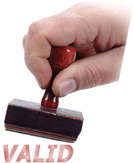How Do You Grade 100,000 Papers?
I am planning to teach a MOOC in 2013. I am taking notes and rethinking the way I have taught online in the past ten years. I know that I will have to change some things about the way I offer content. I will need to think about presentation and perhaps create some video lectures. And I will really have to rethink how to assess the student work.
As a recent NY Times article pointed out, assessing these massive courses is a massive problem. Some courses use automated graders, but most have had to move to alternatives. Particularly difficult are courses that require writing and analysis.
Coursera uses peer grading and five peers should grade your submission and you need to grade five assignments. If you are a teacher and have tried peer grading in your regular classes, you know that it has lots of problems. Not every student can assess accurately or fairly. Certainly we shouldn't expect that they could just step into that role.
Some course hubs are experimenting with software to grade work and to flag students who assign very inaccurate grades much like holistic norming sessions have done for years with multiple readers.
The article points to Mitchell Duneier, a Princeton professor, who is studying the peer grading on the final exam from his summer MOOC on Coursera. But considering the diversity of MOOC learners - something that is part of the mission of the courses - you have learners of all ages, experiences, training and native languages.
“We desperately need crowdsourcing,” says Cathy N. Davidson, a Duke professor of English and interdisciplinary studies. “We need a MOOCE — massive open online course evaluation.”
 If I use the acronym MOOC much more in posts, some readers will probably click off this blog. Yeah, in this year of the MOOC, there has been some saturation. But some of the issues connected to those courses are issues that have been relevant to online education for decades and some literacy and pedagogical concerns are important to all versions of the classroom.
If I use the acronym MOOC much more in posts, some readers will probably click off this blog. Yeah, in this year of the MOOC, there has been some saturation. But some of the issues connected to those courses are issues that have been relevant to online education for decades and some literacy and pedagogical concerns are important to all versions of the classroom.
 Students at all grade levels need to be forced to evaluate Web site credibility for the sources they use. What is taught or required of elementary school students and what we expect from graduate students is clearly very different. But it seems to me that too many teachers at all the higher levels (high school and above) make dangerous assumptions that students "should have learned how to do that" at the preceding level.
Students at all grade levels need to be forced to evaluate Web site credibility for the sources they use. What is taught or required of elementary school students and what we expect from graduate students is clearly very different. But it seems to me that too many teachers at all the higher levels (high school and above) make dangerous assumptions that students "should have learned how to do that" at the preceding level.